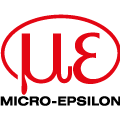
Posted to News on 8th Mar 2023, 11:06
Mclennan supplies custom motion systems to Irish Lights
See Mclennan at MachineBuilding.Live, 4 October 2023, on stand 9

Mclennan’s motion partnership with Irish Lights continues, with the company supplying two more custom motion systems provide energy saving and environmental improvements for Ireland’s historic lighthouses.
Some four years ago, Mclennan designed and suppled a novel custom motion system to drive the historic 5,000 kg rotating Fresnel lens lantern on the unmanned Tory Island lighthouse – located nine miles north-west off the coast of County Donegal. The project, now successfully completed for the Commissioners for Irish Lights, was part of a trial to improve and lower energy costs and reduce the carbon footprint across the entire network of lighthouses that help protect shipping and mariners navigating the Irish coast and islands.
Mclennan’s motion system was a part of extensive engineering upgrade work that replaced the Tory Island lighthouse’s decades old lantern rotation mechanics but maintained the technological heritage of the original Fresnel lens that dates over 100 years. Now, as Irish Lights continues work to improve the energy efficiency and environmental footprint of all of its heritage lighthouses, Mclennan, in a partnership with automation specialist Amon Electronics, has completed similar engineering upgrades to two more lighthouses on Rathlin island which, incidentally, is famed for its puffin population.
Mclennan, prides itself on providing a ‘motion partnership’ service to its customers. More than system integration, this often involves technical consultancy and development at a pre-project phase to enable feasibility studies, evaluate appropriate technologies and investigate ballpark costs. For the remotely located and non-mains powered Tory Island project, Mclennan was involved at a very early stage with the Commissioners of Irish Lights engineers to develop a cost-effective solution.
The specified requirements included battery powered, dual-redundant, servo gearmotors and automation controls to drive the six-metre-high lantern optics via a three-metre diameter geared slewing ring. Throughout the project Mclennan passed its expertise to the project’s main contractors, Amon Electronics, in a new motion partnership.
For the Rathlin East and West lighthouses, Mclennan supplied similar motion systems to the original at Tory Island. Interestingly, the West lighthouse has a unique ‘upside down’ configuration as well as a distinctive, red-tinted lantern to enable its use in an area that is exceptionally prone to sea fog.
Similar in size and scale to the Tory Island lantern, environmental improvements for the Rathlin lighthouses meant replacing high energy 1000W lamps with 70W LEDs whilst maintaining the original heritage Fresnel lenses. Whilst the Tory Island lighthouse had no mains electrical power and required the installation of solar PV and battery power and low voltage DC operation for the drives, Rathlin Island has mainland connected power.
Although this made the motion system requirements somewhat less stringent, Rathlin’s environmental upgrade entailed that backup diesel generators were removed and replaced with batteries. Consequently, this called for a similar high efficiency battery powered drive system in the event that power from the mainland might fail.
Although the Rathlin lighthouses have new ball-race bearing systems that replaced out-dated mercury bath bearings as well as upgraded slewing rings for improved efficiency, the huge load inertia of the lantern optics and its acceleration and continuous rotation speed provided a formidable challenge for the gearmotor specifications. As a solution, that had proven efficient and reliable for the Tory Island upgrade, Mclennan specified a 24/48V DC powered brushless, integrated 400 W servo drive from its distribution partner JVL Industri Elektronik A/S.
The packaged solution included encoder feedback, RS485 communications and a programmable motion controller. With its integral power supply, this very compact decentralised solution both reduced wiring and suited the limited installation space in the lighthouse tower. To ensure the torque and speed required to drive the lantern and to mitigate the very large moment of inertia presented by the slewing gear arrangement, Mclennan specified two inline-connected planetary gear units to provide a nominal output speed of 14 rpm.
The combined gear ratios’ torque magnification factor and reflected inertia reduction was more than sufficient to comfortably drive the lantern optics at its desired speed of 60 to 300 seconds per rotation. The short-term motor current and torque load during acceleration of the lantern and the much lower continuous current at running speed proved well inside the power requirements specified for prolonged use from the possible backup battery supply scenario.
As part of the redundancy back-up requirements, each gearmotor included a free-wheeling clutch integrated into its output stage. With one drive powered at any time, the second unpowered drive could idle. The Mclennan supplied control cabinet included a programmed ARM microcontroller that took care of functions such as motor performance and acceleration timing, battery condition and related I/O processes, as well as the management of the slewing ring’s gear lubrication delivery system. The microcontroller also managed the motion systems’ redundancy through the detection of any failure of the primary motor drive - then energising the secondary drive.
The cabinet included visual indicators for critical functions. A connected telemetry system, supplied separately, relays information from the control panel to the mainland. Mclennan developed the control panel the for the Tory Island project and included a C++ diagnostic and commissioning front-end which was passed to Amon Electronics and is used by Irish Lights for maintenance.
Amon Electronics and Mclennan completed work on the Rathlin Island lighthouses and there are many other Irish Lights lighthouse upgrade projects in preparation. Several of these are without mains power and will consequently require the Tory Island self-sufficient electrical model.
The Rathlin lighthouses were originally commissioned in 1856 and 1919 respectively, both retain their historic first order Fresnel lenses and with the removal of mercury material and diesel generators, have much improved the safety and reduced the environmental impact of these important facilities for several generation to come. Other modification improvements under consideration include replacing the stand-alone RS485 programmed intelligent drives with Ethernet interfaced alternatives so that real-time information can be easily relayed for preventative maintenance, improved safety and other enhanced control possibilities.
Want the latest machine building news straight to your inbox? Become a MachineBuilding member for free today >>
Unit 1, The Royston Centre
Lynchford Road
GU12 5PQ
UNITED KINGDOM
+44 (0) 1252 531444

















